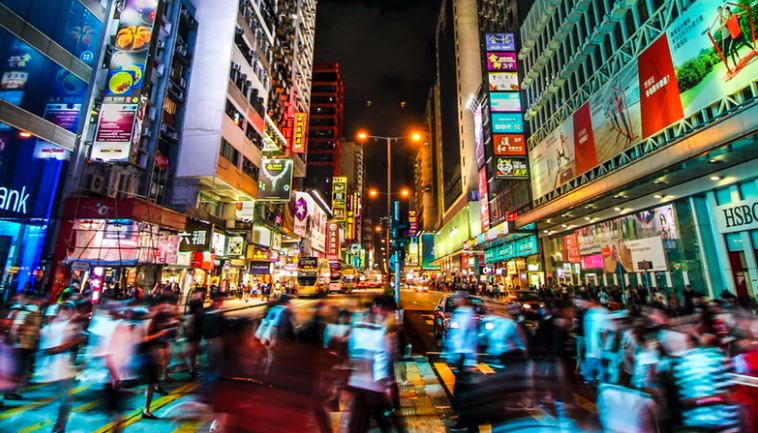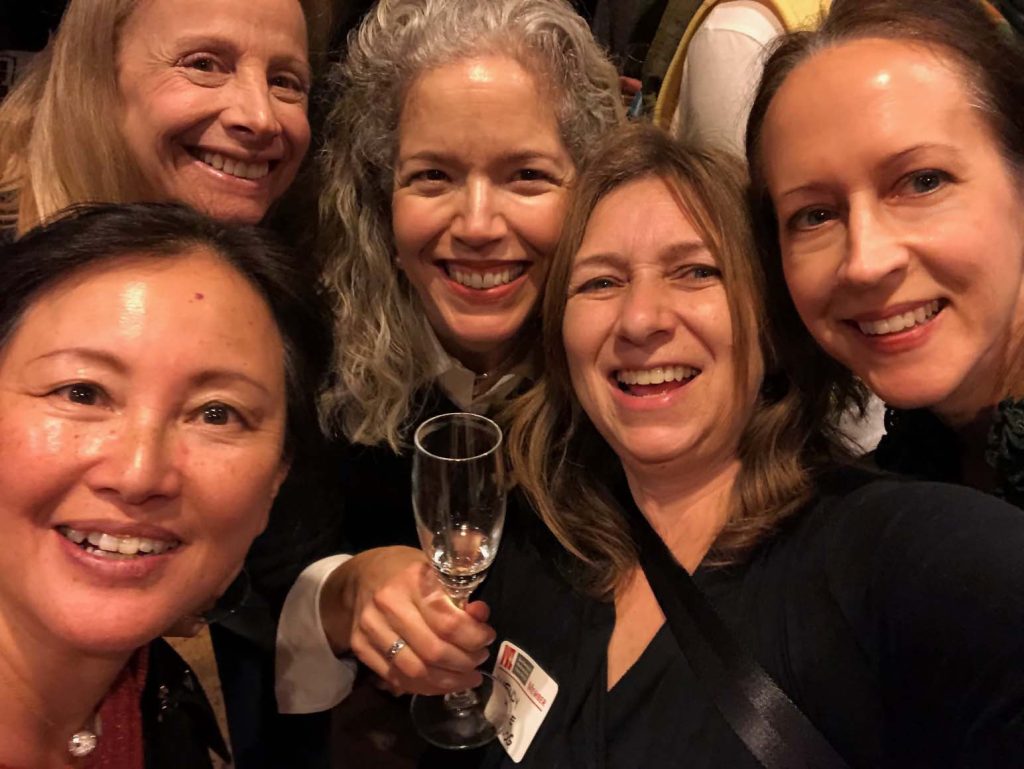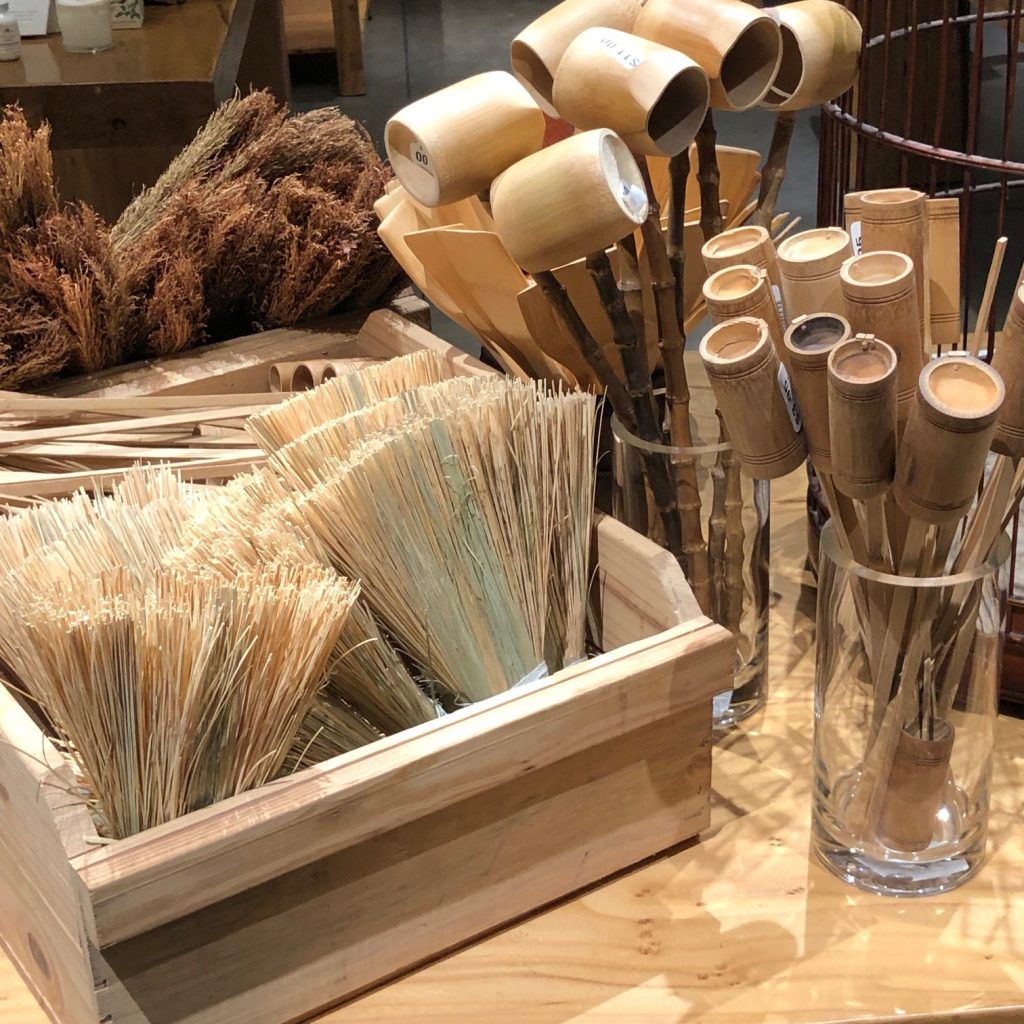Panel Discussion: “The Future of Chinese Food in San Francisco.” Held by the San Francisco Professional Food Society,

HOST:
George Chen, Owner of China Live, Eight Tables, and advocate for fine Chinese cuisine
MODERATOR:
Carolyn Phillips – Nominated twice for a James Beard Award is a food writer, scholar, and artist.
PANELISTS:
Jonathan Kauffman – San Francisco Chronicle Food Reporter
Luke Tsai – senior editor at San Francisco magazine
Carolyn Jung – James Beard Award-winning food writer based in Silicon Valley
There is nothing I love more than to be in a situation where everyone feels totally comfortable, and I feel completely out of place. It means that I have gone outside of my bubble, and that there is a whole expansive space that I have yet to explore.
– Wendy Louise Nog, Founder, Future Bright
Late afternoon one fall day in San Francisco. One of my three children didn’t feel well, and was suddenly taken with a tummy ache as we were walking through the city. Being a believer in the healing powers of food, and based on her coloring, I thought that she needed chicken soup, and fast! We ducked into a Chinese restaurant and sat down in the lively dining room filled with Chinese families. All around us were tables filled with steaming bowls of noodles and broth. We were handed a menu. I could not actually read it, as the only English words were pretty non-descriptive. Chicken…it said, hand-written onto the paper, with beautiful chinese writing next to it that probably told the whole history of the recipe. I will take the chicken, I said, and pointed to it.
I have always felt that a truly authentic Chinese restaurant has a lot of shouting between the person taking the order and the invisible cooks in the kitchen, with a lot of doors swinging back and forth with banging and chopping sounds emanating from somewhere in the back. This particular restaurant fulfilled those requirements. Within moments, a small plate with tiny pieces of chicken appeared in front of my daughter. We all looked at it feeling bewildered, as it was very much not soup. There was about a teaspoon of meat on the bones. I raised my hand, and the server came rushing over. “Could we have chicken soup,” I asked sheepishly? “Soup, Yes!” she said, and began yelling at the cooks again. A few minutes later, a steaming bowl of chicken soup arrived. My daughter weakly began eating the soup with a big spoon, and I noticed that there were chicken foot knuckles floating to the surface. I said nothing, as it would have meant an immediate pause in the soup consumption. My daughter ate the soup, she felt better, and we left, happy. “I wonder what kind of chicken that was,” she pondered out loud after we left.
I was reminded of that soup day during the panel discussion at George Chen’s China Live restaurant focusing on “at “The Future Of Chinese Food”. George Chen has been tirelessly working to raise the status of Chinese cuisine. One of the panelists said that with European food, traditional is considered good, but with Chinese food, it is bad. I understood exactly what they meant, because on that soup day, one of my kids said, reflecting on our experience, “Mom, that restaurant was too traditional!”
The discussion brought up for me fond and (also gory) memories of walking down Stockton Street on my way to work through China Town every morning, smelling the strange smells, passing the halves of pigs and decapitated fowl, wild looking roots, dried fish, mushrooms of all sizes and shapes, giant tanks of sea creatures, all pungent to my nose. Those aromas did not make my mouth water, they made my eyes water, which has always intrigued me. How is it that we as humans develop such varied tastes? The wide ranging contents of my children’s classmates’ lunches proved to me that we learn to love foods by association and comfort. Unless we grew up eating these foods, our palette is unfamiliar with traditional Chinese spices and ingredients, and while we devour plates of noodles and spicy shrimp, we do not even scratch the surface of this complex cuisine, that varies vastly from region to region within China, and as the cuisine has adapted to its arrival in new places around the world.
Why Is Chinese Cuisine Stuck In A White Cardboard Box? – George Chen
Judging the authenticity of a restaurant’s cuisine based on the heritage of the guests in the dining room is an often used method for guessing the quality of taste. I would definitely think that an Indian restaurant with a lot of Indians would have delicious food. A Japanese restaurant with a lot of Japanese people inside would be good. Same with Italian, Jamaican, Mexican, and on and on. But I am wary of Chinese restaurants that have a lot of Chinese diners because I worry that I may not like the food…or rather, that I will be afraid of the food! (It isn’t just Chinese cuisine, I have the same feeling about Spanish food…I am just not a fan of tripe!)
“Why can’t Chinese food break past being cheap and served in white paper boxes?” George Chen, owner of China Live, lamented out loud. “Why is it hard to imagine a $400 Chinese meal? Chinese cuisine is 5000 years old, the oldest in the world. Why is it stuck in a white cardboard box?”
The answers unrolled from the panel and the audience. First generation Chinese elders will scoff at expensive food. In Chinese restaurants, chefs are hidden in the back, not out in front as celebrities. Ingredients are hard to come by and replacements are required. And most soul crushing, food from poor countries is expected to be cheap.
The Opium wars are barely touched upon in history classes, even though they are the most fascinating, fortune making, culturally devastating events in modern history. Opium, Spices and Slave trade brutally carved deep scars throughout India, the Middle East, and China. When I studied the Opium Wars for the first time in college, I learned of a moment that forever etched in my mind the folly of European belief that theirs was a superior culture. Before the wars began, when the British delegates had arrived in China with their wives to negotiate the importing of opium, the Chinese wives refused to dine with the new arrivals because they smelled badly. It was a pristine moment when an ancient, culturally advanced population clothed in silks was confronted by a rough, brutal group of people who didn’t bathe, destroyed silk factories to replaced them with cotton factories to process the bales of cotton picked by their slaves, yet who believed themselves to be from a more civilized race. Sadly, advancement in weaponry and machines of destruction motivated by greed will always win over advancement in intellectual thought, artistry, and culture.
A wave of men and a few families left China for the US to escape the Opium Wars in the 1800’s and many landed in the US and were employed to build the railways. In the mid-1800’s, 10% of the population of California was Chinese. Today it is 4%. They were met with intense discrimination, as were other new arrivals such as Indians, and really all new influxes. Because of this early arrival and in great numbers, as one panelist said, the cuisine has been a part of our cultural landscape throughout the US for a long time, and is often the first “exotic” food that Americans eat. This was certainly true for me, growing up in rural Minnesota. Chinese cuisine has always adapted to the available ingredients and cultural norms of the region. In Minnesota that meant thick gravy, canned vegetables, and lots of onions and celery. As the global transportation system has transformed the availability of ingredients, of course that has now changed.
The memory of the British forcing opium upon its population and the damage that it did has left a mark of distrust with China of the West. A devastating attempt to reject the West’s economic influence on China took place in the mid-1900’s in the Cultural Revolution, and sadly millions starved or were killed, rationing went too far, and Chinese cuisine was reduced to survivalist cooking with whatever could be found, including grass. George Chen shared that during the Cultural Revolution in China, restaurants were closed, and much was lost to the culinary world within China. There have not been culinary schools providing certificates, or the culinary training and infrastructure that exists in much of the rest of the world. He can’t bring over chefs from China because in spite of their skill, they do not have certificates proving that expertise.
Our experience with Chinese food is a complex web of our own country’s short and often dark history, the global competition for goods and resources, the 5000+ year old history of China, which now has the world’s largest population, our culinary curiosity, or discomfort with the unfamiliar, and the exciting emergence of a movement to introduce the world to fine Chinese foods.
What I lack is the language of Chinese cuisine, an understanding of the ingredients, and the story behind the recipes. This was a common thought expressed by the audience of the panel. What is the difference between traditional and American Chinese cuisine? The preparation? The ingredients? I know the somewhat unsavory story behind my favorite Italian dish, Spaghetti alla puttanesca. I have been in tiny villages in France where cheese is made. I have hidden in a room with towels blocking the crack under the door while cooks in our kitchen in Kolkata chopped peppers that turned the air into fire for your lungs. But when it comes to Chinese cuisine, all I have is images in my mind of rice fields with people walking through them wearing wide grass hats. One participant said that perhaps the next step is for Chinese food artisans to begin to educate us, give us the stories, give us the language we need to understand the nuances of the ingredients and preparation. The first time a Chinese restaurant achieved three Michelin stars happened just in July of 2018, a status 5000 years in the making. Chinese cuisine is just at the cusp of taking a long overdue spotlight, and if you are ignorant like me, feeling out of place in the expansive world of Chinese cuisine, a wonderful journey awaits us!
Laurie Gaugan, Personal Chef To The Stars (with special diets), far right, Wendy Louise Nog, Second From Right.
To learn about Laurie’s incredible specialty of creating delicious cuisine for restricted diets, visit her at her website: https://www.cheflauriegauguin.com/



